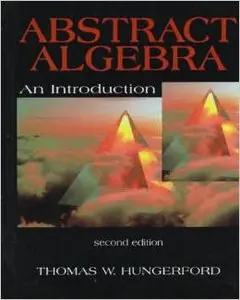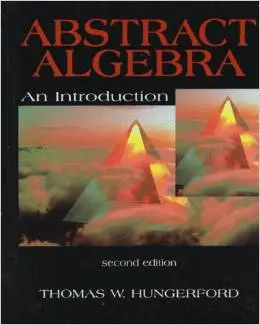"Abstract Algebra: An Introduction" by Hungerford
1996 | ISBN: 0030105595 | Pages: 591 | English | PDF | 21 MB
1996 | ISBN: 0030105595 | Pages: 591 | English | PDF | 21 MB
Reader's reviews:
If you've already taken some undergrad courses in number theory, discrete mathematics, or linear algebra, then you'd be more than enough prepared to go through this book on your own. It's highly readable, and the problems aren't that hard to solve. He also breaks up the problems in 3 sets with the last being the hardest. There is also an appendix that helps refresh basic concepts of proof, logic, and set theory. Reading through the appendix is enough to prepare anyone that has taken calculus for the material in the book. My only complain is that there is no student solutions manual.
This text was my first exposure to the beauty of Algebra and as my first text I must pay respect to Hungerford for his excellent, original and well written book. Hungerford has an uncany nack for presenting material in a straight-forward and consistent manner as well as providing a rich graded (i.e. they ascend in difficulty) section of exercises that, yes, do depend upon prior results. This dependence does not in any way limit the quality of the book since, such inter-connected-ness shows how certain seemingly un-related aspects are indeed related and, moreover, if you are using this text and have not noticed that this theme is prevalent throughout the book, then you may want to stop and take a closer look. Hungerford begins with the familiar integers, their basic number-theoretic properties and then uses these ideas, suitably abstracted, to introduce operations on and within rings all the while reminding the reader of the similarities. Only after an introduction to rings, their ideals and ring homomorphisms does Hungerford give the reader a glimpse of groups and their basic properties, again reminding the reader along the way how these operations are generalizations of the previous and more familiar operations. Now, the approach of Hungerford in this introductory text is definitely non-traditional since he introduces rings before groups and for some this may be a problem, why I am not sure, but it is pedagogically sound. Remember that in this day and age of American academia that most students have had very little exposure to rigorous mathematics and hence for the sake of most undergraduate students it is important to continually progress from the more familiar and less abstract (integers) to the less familiar and much more abstract (groups). Another positive aspect of this text is the inclusion of an appendix in which solutions and or hints to selected problems is contained, this feature is, again, beneficial to the student. As for those that require a student solutions manual, well my only comment to you is find another major that requires less work and or brain-power. Mathematics is about discovery, patience, persistence and truck-loads of hard work, which is partially realized as a direct result of struggling through difficult, challenging and often self-referential problems. Again, in defense of this book and the author, consider the following fact, Hungerford received his Ph. D under the direction of the legendary Saunders MacLane, so if you are at all familiar with the name then you should be familiar with his standards and hence should expect nothing less from the work of Hungerford. Thus, this book, aside from the ridiculous price, is a great introduction to abstract modern algebra. As for the negative side of this text, aside from what I have already mentioned, this book can be much too wordy and contains entirely too many examples for my tastes but these are petty and trivial.



